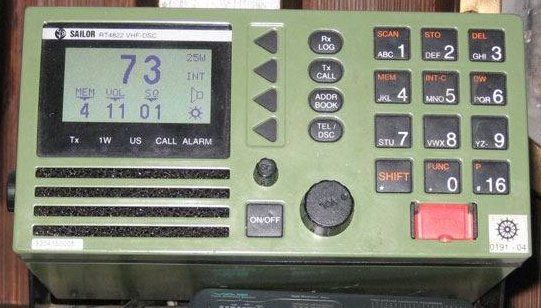Gmdss radio simulator and how to send a maritime distress call?
Distress call Procedure:
Whenever there are life threaten on the boat you need to send a Distress call. Example of situations: Piracy, Leaning, no power and draging and other.
If the VHF GDMSS device is connected to GPS, first turn on the GPS and then turn on the VHF GMDSS by pressing on/off button or turn the volume up button. If you have VHF with GDMSS press button “DISTRESS” for 5 second. This will send undesignated distress call with your GPS location. After you send this call send VHF GMDSS device to chanel 16 and wait for answer.
When you receive acknowledge pick up the headphones and follow the procedure:
This is
MAYDAY
This is
Position: We are located at xx degress, xxxx minutes North and yy degress yyy minute East at
Tell them what is wrong…
Kind of assistance needed…
Number of crew on the boat…
Other info:….
Needing fast assistance…
OVER.”
Call sign*: 7 digit given to VHF GDMSS device
MMSI number**: 9 digit long number that is given to every boat by Gouverment. It is made by 3 digit country code. For boat those 3 numbers are on first three digits.
About Global Maritime Distress Safety System (GMDSS)

Safety at sea can be guaranteed by using the Global Maritime Distress Safety System (GMDSS). Navigators, seafarers, ship captains and yacht or sail boat owners are familiar with the global maritime radio equipment. They are experts in the use of the communication system during distress or mishap. Knowledge and skills in the use of global maritime communication system are very important. This is to ensure safety of the people on board, quick rescue and crew survival.
Navigators, sailors and mariners have relied to the global maritime communication system for their protection and safety while at sea. For many years, they have been using the old communication system until advance technology has improved and added new features. Today, there is a wide selection of maritime system communication equipment available in the market with the advance and excellent features. The global maritime safety system is an efficient device use primarily for alerting, homing, coordinating and communicating. The use of the global maritime communication device is required to all vessels offshore in compliance with the IMO Resolutions.
The radio requirements depend on the kind of vessel and type of operations the ship is engage with. Cruise ships, yachts or vessels for tourism are having the Digital Selective Calling (DSC) VHF while cargo or passenger vessels can have the global maritime system. Radio requirement for small fishing boat carrying less than 300 of Gross Tonnage (GT) can be optional. The maritime communication system have various functions including emergency source of power, distress alerting, general communication, ships locator, determine ship’s position, search coordination, rescue operation and information broadcasts.
Students can download global maritime distress simulator course from a reliable online site. They can study online to learn how to send maritime distress call. Download GMDSS simulates real or actual conditions of marine distress communication. The students learn how to use NAVTEX, VHF, EPIRB, SART, MF/HF (DSC) and other equipment. The course online follows the GMDSS syllabus including procedures in DSC transmission distress alerting, distress communication, distress alert relay, safety procedures, communication protocol and many more. With the simulator, student’s skills and level of training can be improved. After training, the communication specialists and operators sit for the examination from the download simulator and if they passed, they are awarded with Certification. The General Operator Certificate (GOC) or the Restricted Operator Certificate (ROC) is required for seafarers to guarantee safety at sea and reduce number of casualties.
